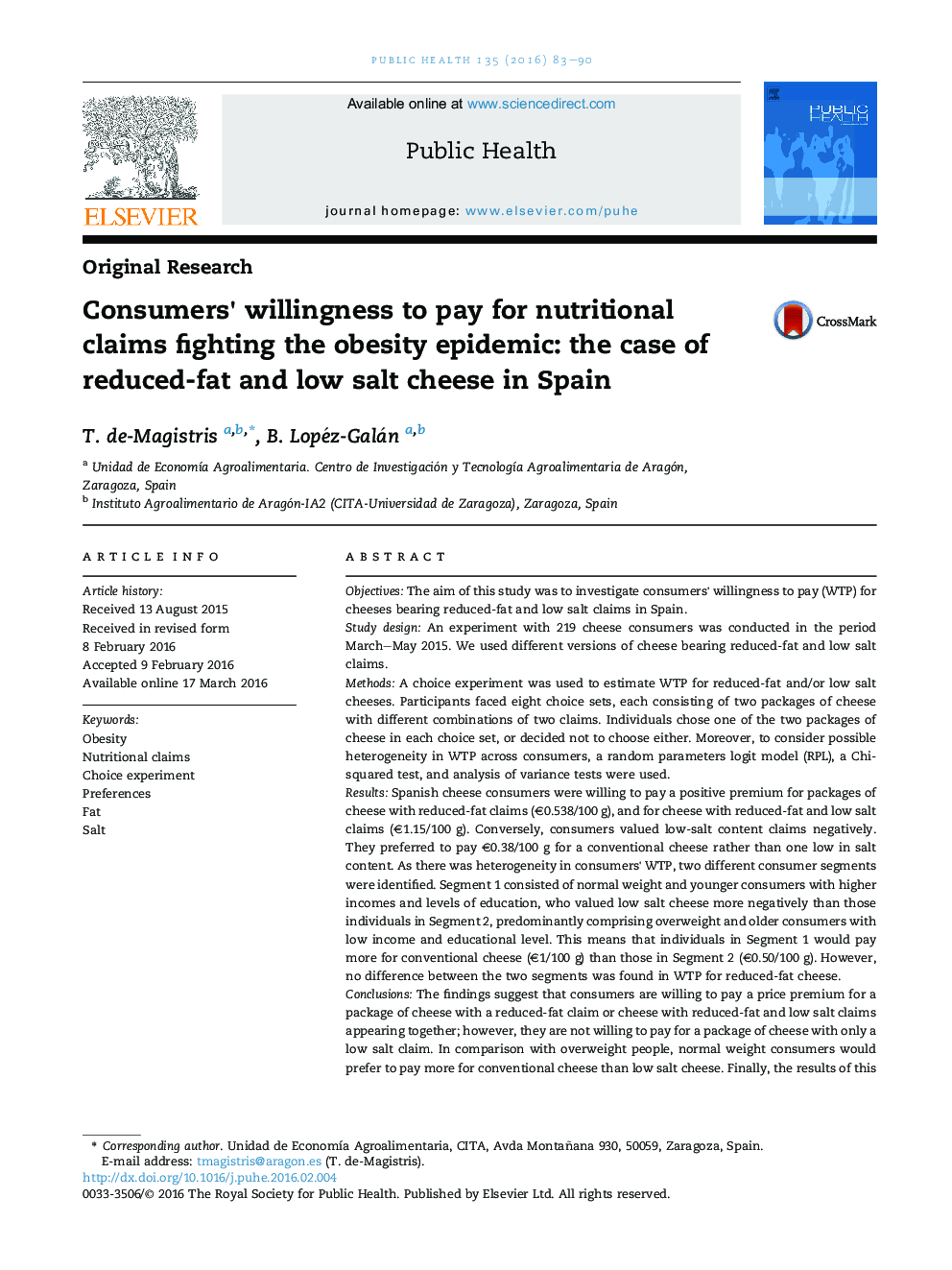| کد مقاله | کد نشریه | سال انتشار | مقاله انگلیسی | نسخه تمام متن |
|---|---|---|---|---|
| 1087288 | 1487208 | 2016 | 8 صفحه PDF | دانلود رایگان |
• We investigated preferences for reduced-fat and low salt content cheese.
• Real choice experiment was used to estimate consumers' willingness to pay.
• Consumers were willing to pay a positive premium price for reduced fat cheese.
• Consumers were not willing to pay for low salt cheese.
• Normal weight people paid for low salt cheese less than overweight ones.
ObjectivesThe aim of this study was to investigate consumers' willingness to pay (WTP) for cheeses bearing reduced-fat and low salt claims in Spain.Study designAn experiment with 219 cheese consumers was conducted in the period March–May 2015. We used different versions of cheese bearing reduced-fat and low salt claims.MethodsA choice experiment was used to estimate WTP for reduced-fat and/or low salt cheeses. Participants faced eight choice sets, each consisting of two packages of cheese with different combinations of two claims. Individuals chose one of the two packages of cheese in each choice set, or decided not to choose either. Moreover, to consider possible heterogeneity in WTP across consumers, a random parameters logit model (RPL), a Chi-squared test, and analysis of variance tests were used.ResultsSpanish cheese consumers were willing to pay a positive premium for packages of cheese with reduced-fat claims (€0.538/100 g), and for cheese with reduced-fat and low salt claims (€1.15/100 g). Conversely, consumers valued low-salt content claims negatively. They preferred to pay €0.38/100 g for a conventional cheese rather than one low in salt content. As there was heterogeneity in consumers' WTP, two different consumer segments were identified. Segment 1 consisted of normal weight and younger consumers with higher incomes and levels of education, who valued low salt cheese more negatively than those individuals in Segment 2, predominantly comprising overweight and older consumers with low income and educational level. This means that individuals in Segment 1 would pay more for conventional cheese (€1/100 g) than those in Segment 2 (€0.50/100 g). However, no difference between the two segments was found in WTP for reduced-fat cheese.ConclusionsThe findings suggest that consumers are willing to pay a price premium for a package of cheese with a reduced-fat claim or cheese with reduced-fat and low salt claims appearing together; however, they are not willing to pay for a package of cheese with only a low salt claim. In comparison with overweight people, normal weight consumers would prefer to pay more for conventional cheese than low salt cheese. Finally, the results of this study contribute to insights in the promotion of healthier food choices among consumers. In this regard, outreach activities promoted by food companies could drive consumers to increase their knowledge of the benefits of eating reduced-fat and low salt food products in relation to their health status.
Journal: Public Health - Volume 135, June 2016, Pages 83–90
